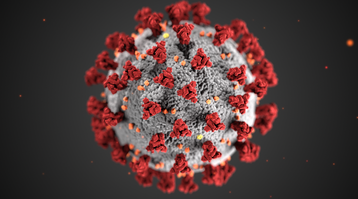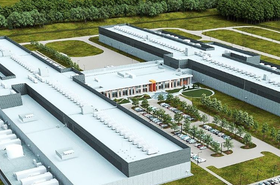Lawrence Livermore National Laboratory has turned to AMD and Penguin Computing to upgrade a supercomputer to help in the fight against the novel coronavirus. The computer's name is... Corona.
The 2018 system, named for the total solar eclipse of 2017, will nearly double in peak performance to 4.5 peak petaflops.
United against Covid-19
AMD will supply its Radeon Instinct MI50 accelerators at no material cost to the National Nuclear Security Administration (NNSA) - but in return, AMD will get an unspecified number of Department of Energy supercomputer compute cycles in the future.
These compute cycles will be used for a "variety of purposes," the company said, including for Covid-19 HPC Consortium-approved research, but also AMD commercial development efforts.
“It is well-known that AMD is a key partner in the upcoming delivery of the first NNSA exascale-class system, the Hewlett Packard Enterprise El Capitan supercomputer,” Michel McCoy, director of LLNL’s Advanced Simulation and Computing program, said.
“But an enduring partnership involves multiple collaborations, in each of which we pursue common goals. We are delighted that AMD made this generous offer, particularly given the need for a determined pace in mitigating and, ultimately, in defeating this pathogen.”
AMD joined the Covid-19 HPC Consortium on April 6, along with Nvidia, IBM, and the major US cloud providers. It brings together the companies, as well as more than a dozen member institutions in government, industry, and academia to make use of a large number of the DOE's supercomputers to accelerate development of detection methods and treatments for Covid-19.
Together the supercomputers offer more than 400 petaflops of performance. Distributed computing platform Folding@Home, meanwhile, peaked at 2.4 exaflops of performance earlier this month - more than the top 500 supercomputers around the world combined.
But with the complexity of Covid-19 research, every ounce of added performance helps. On the Corona system, LLNL researchers are evaluating therapeutic antibody designs that could have improved binding interactions with the SARS-CoV-2 antigen protein. The researchers believe the upgrade will double the number of computationally expensive simulations they are performing, making it more likely they’ll discover an effective antibody design.
“The addition of these new state-of-the-art GPUs on Corona will boost the capability of the teams working on Covid-19,” Jim Brase, LLNL’s deputy associate director for programs, said.
“It’s going to allow us to go faster, with more throughput. We’ll have more resources, so we can run more cases and potentially get to new designs for both antibodies and small molecules faster, that may lead to better treatments. They’ll also enable some of our new software, both for simulation and machine learning applications, to run more efficiently and better.”




